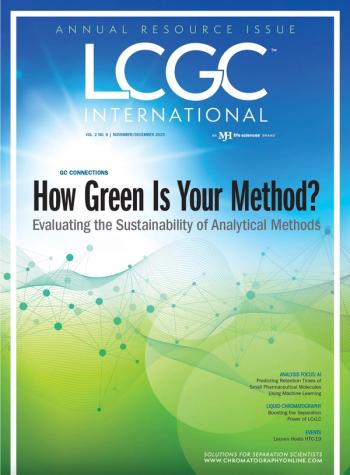
- Special Issues-12-01-2014
- Volume 32
- Issue 12
Enantiomeric Separation of Commonly Used Chiral Corn Pesticides Using SFC
The analysis of chiral pesticide is needed to improve risk assessment and establish, in some cases, the justification for production of single- or enriched-enantiomer products. Chiral pesticides are commonly used throughout the agriculture industry and their very chiral nature can lead to enantioselectivities in their mechanisms of action. These differences can also impact their efficacies, toxicities, degradation rates, and persistence in the environment.
This report illustrates good suitability of Regis' chiral columns for analysis of chiral pesticides (Figure 1). While chiral HPLC is a traditional, analytical technique that is performed for this analysis, we report good results using SFC (supercritical fluid chromatography) analysis. SFC is a technique that allows for fast and efficient separations of non-chiral and chiral compounds. It is known for its lower environmental impact, unlike its classical counterpart, liquid chromatography, and therefore could be advantageous.
Experimental Conditions
SFC analysis was performed on the Waters Investigator SFC System. Regis chiral columns - RegisPack, RegisCell, and Whelk-O1 (25 cm × 4.6 mm, 5 µm) - were utilized for method development as the analytical columns.
Conclusion
Chiral separations of commonly used chiral corn pesticides using SFC are reported. Screening was done on chiral columns with various solvent conditions. A set of complementary chiral columns and method development was necessary to achieve selectivity for different compounds. While good results are reported for enantiomeric mixtures, results varied for mixtures of diastereomers and still require further improvement (Figure 2). Compared with traditional HPLC chiral methods, the SFC chiral analyses are usually more efficient. This means methods are faster with good selectivity making SFC the technique of choice.
Regis Technologies, Inc.
8210 Austin Ave., Morton Grove, IL 60053
tel. (847) 583-7661, fax (847) 967-1214
Website:
Articles in this issue
about 11 years ago
MicroSolv Technologyabout 11 years ago
Milestone, Inc.about 11 years ago
Pickering Laboratoriesabout 11 years ago
Shimadzu Scientificabout 11 years ago
Restek Corporationabout 11 years ago
Shodex/Showa Denko America, Inc.about 11 years ago
SiliCycle® Inc.about 11 years ago
AccuStandard, Inc.about 11 years ago
CHROMacademyabout 11 years ago
Avantor Performance Materials, Inc.Newsletter
Join the global community of analytical scientists who trust LCGC for insights on the latest techniques, trends, and expert solutions in chromatography.



